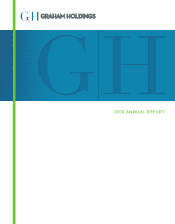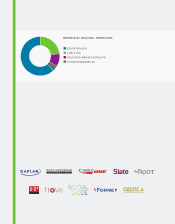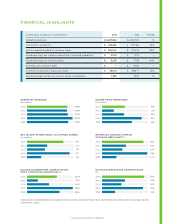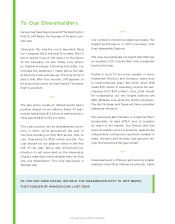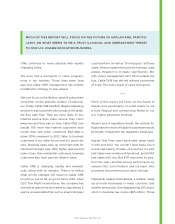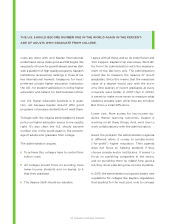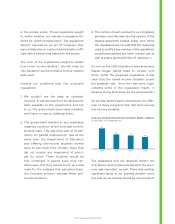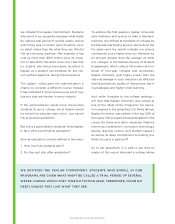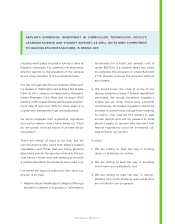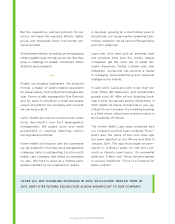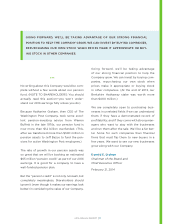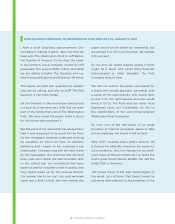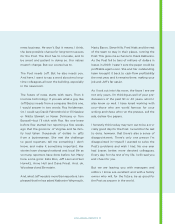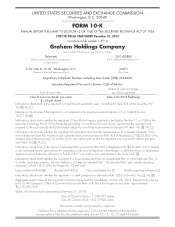Washington Post 2013 Annual Report Download - page 5
Download and view the complete annual report
Please find page 5 of the 2013 Washington Post annual report below. You can navigate through the pages in the report by either clicking on the pages listed below, or by using the keyword search tool below to find specific information within the annual report.
2013 ANNUAL REPORT | 3
ONE continues to move astutely with rapidly
changing times.
We once had a monopoly in video program-
ming in our markets. Those days seem long
ago, but Cable ONE management has smartly
modified its strategy to stay ahead.
We now focus on the lifetime value of subscribers
more than on the absolute number of subscrib-
ers. Today, Cable ONE carefully targets marketing
and service at customers who produce the great-
est free cash flow. They are more likely to buy
Internet service than video service, they churn
away less and they pay on time. Cable ONE now
installs 75% more new Internet customers each
month than new video customers. Bad debt is
down 30% compared to 2012. Sales to business
customers is our other focus—and for good rea-
sons. Business sales were up more than 20% for
the fourth straight year. With higher revenue and
lower churn than residential customers, business
customers also have superior lifetime value.
Cable ONE is changing, rapidly and dramati-
cally, along with its industry. There’s no telling
what all the changes will mean to Cable ONE
long term, but so far, so good. Since 1993, when
CEO Tom Might moved there, the company has
evolved at speed and as needed to stay ahead. It
seems unreasonable that such a small company
could perform as well as “the big guys” all these
years, when programming and technology costs
always threaten to increase significantly. But
with clever management who think outside the
box, Cable ONE has thrived without economies
of scale. The next couple of years look good.
3
3
3
Much of this report will focus on the future of
Kaplan and, particularly, on what seems to me
a truly illogical and unreasoning threat to our
U.S. higher education business.
Absent such a regulatory threat, the outlook for
Kaplan and for each of Kaplan’s businesses would
be bright. I’ll deal with the regulatory issues last.
Kaplan Test Prep came back after down years
in 2011 and 2012. You couldn’t have had a much
worse test-taking climate—the decline in LSAT
test-takers was widely written about, and GMAT
test-takers fell, too. But KTP improved its posi-
tion this year—another strong performance by
veteran CEO John Polstein and his team, who
promised improvement and came through.
Meanwhile, Kaplan International, a division made
up of many businesses in many countries, had
another strong year. One disappointing 2011 acqui-
sition in Australia has cost us $65 million. Those
MUCH OF THIS REPORT WILL FOCUS ON THE FUTURE OF KAPLAN AND, PARTICU-
LARLY, ON WHAT SEEMS TO ME A TRULY ILLOGICAL AND UNREASONING THREAT
TO OUR U.S. HIGHER EDUCATION BUSINESS.

